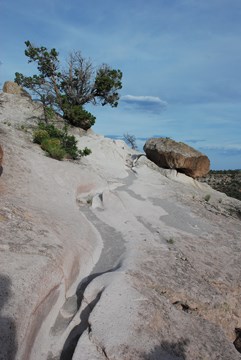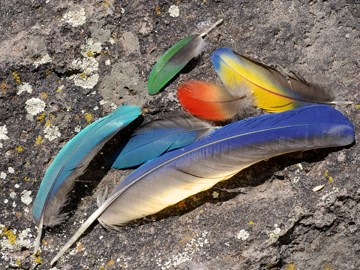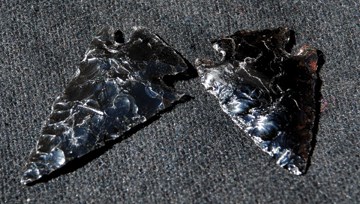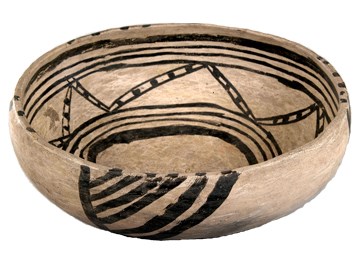
photo by sally king 
photo by sally king Although the local area provided most of the people’s needs, there were some things that could only be obtained by trade. Locally produced items including pottery, obsidian, woven goods, corn, and piñon nuts were traded for turquoise, salt, seashells, and colorful macaw feathers from places as far away as Mexico and the coast of California. In the process there was probably a lively exchange of knowledge, customs, and ideas as well. 
photo by sally king Eruptions in the nearby Jemez Mountains produced high-quality obsidian, used for making very sharp tools and projectile points. This volcanic glass, both worked and raw, provided an important trade item for local people. Because each source of obsidian has a unique chemical composition, archeologists can determine that Jemez obsidian was traded over a very wide area. 
Bandelier Museum Collection Pueblo potters in different areas developed unique styles, using distinctive materials and designs that evolved over time. Knowing these characteristics, archeologists can determine when and where pieces of pottery were made. They have found that, for centuries, pottery was commonly traded between neighboring communities as well as over long distances. Complete pots are seldom found here, but information can also be obtained from broken pottery pieces, called potsherds. These can be used to answer basic questions including what the pot was used for and when and where it was made. However, a potsherd can only tell its full story if left in its original location, connected to the rest of its story. If potsherds are taken away or moved from their original locations, critical information is lost. 
NPS Collection |
Last updated: April 28, 2025
